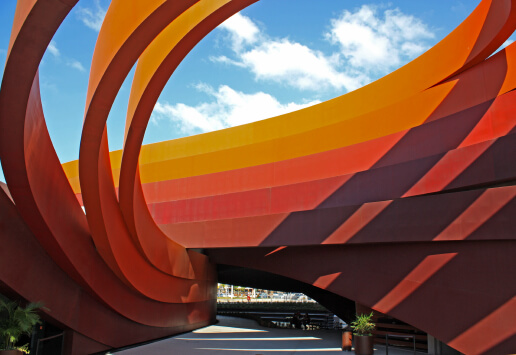Design is undergoing a revolution. Technology is empowering more people to create and disseminate designs, and professionals are using it to share their work with the world
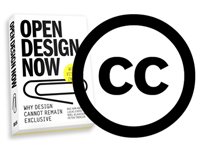
Design is undergoing a revolution. Technology is empowering more people to create and disseminate designs, and professionals and enthusiasts are using it to share their work with the world. Open design is changing everything from furniture to how designers make a living. It transpires that we are far less individualistic than we think, and community life that typified us in the past will also typify us in the future. Open design opens up the potential for participatory living.
I met Bas van Abel in The Waag, an ancient building in the center of Amsterdam that looks like a fairytale castle.
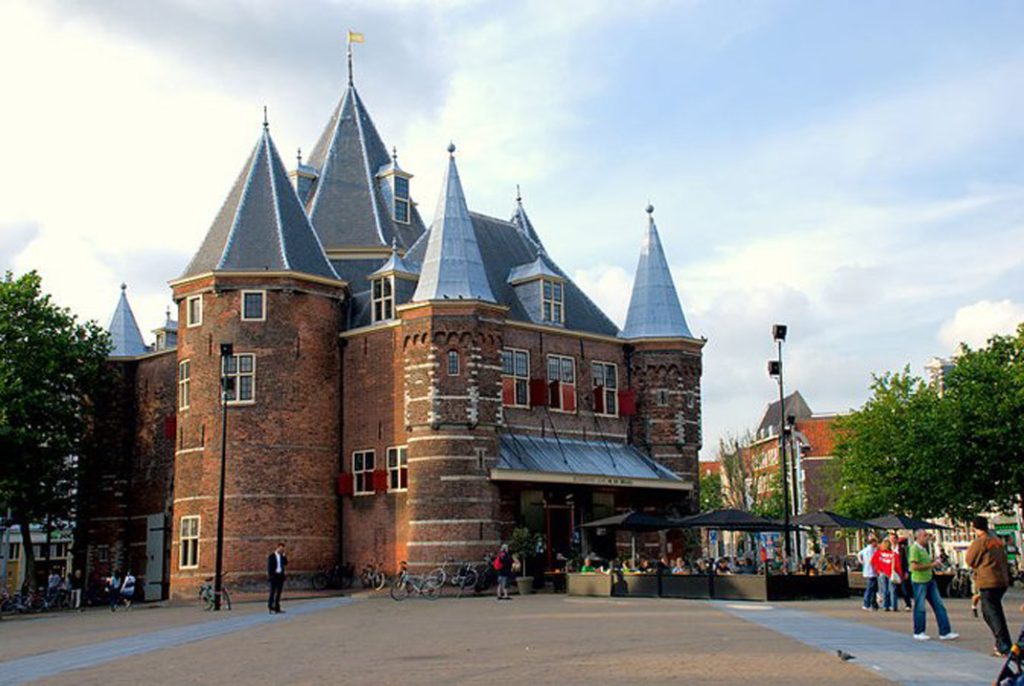
Located on the second floor is FabLab, a local fabrication laboratory that serves the residents of Amsterdam. It is run by a group of people imbued with belief who are working to realize the notion of open design/production/use.In pragmatic and individualistic reality, their endeavor seems detached from reality. But it is becoming increasingly apparent that their vision is gaining momentum, not only in Amsterdam, but in many other places around the world as well, including Holon, Israel.It transpires that we are less individualistic than is perhaps customary to describe us. Community life typified us in the past, and it seems that in light of the awakening of the social movements and revolutions we are currently witnessing in Israel and around the world, community life will typify us in the future as well. We always want and look for friends with whom to share the meanings of our life, and to shape and create our experiences and environments with them. Open design touches on these social points and opens before us the potential for participatory living.
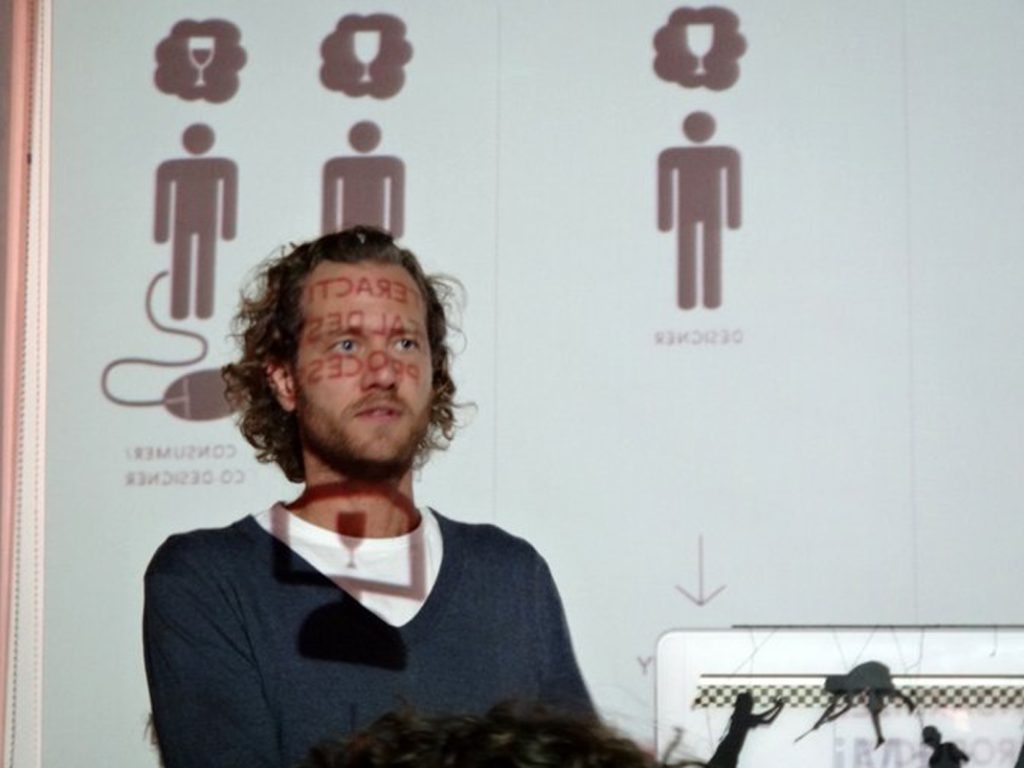
I visited FabLab together with designer Tal Erez and a group of students we took on a design study tour in Holland. Bas met us and gave us a talk about the principal ideas detailed in Open Design Now, which he coauthored. The book was first printed in 2011, and is gradually being exposed on the Open Design Now website. More than half of the book has already been exposed at the time of writing this article. The act of exposing the book is, of course, an integral part of the notion of open design.
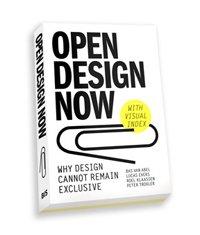
I visited FabLab together with designer Tal Erez and a group of students we took on a design study tour in Holland. Bas met us and gave us a talk about the principal ideas detailed in Open Design Now, which he coauthored. The book was first printed in 2011, and is gradually being exposed on the Open Design Now website. More than half of the book has already been exposed at the time of writing this article. The act of exposing the book is, of course, an integral part of the notion of open design.The book opens with the authors’ declaration:
“Design is undergoing a revolution. Technology is empowering more people to create and disseminate designs, and professionals and enthusiasts are using it to share their work with the world. Open design is changing everything from furniture to how designers make a living.”
The book is organized in three sections: the first explains the notion of open design, the second presents applications of ideas stemming from ways of thinking and the perception of reality as open, and the third section presents the principal terms and concepts of this worldview.
In other words, what we have before us is not only a different methodology of design / production / use, but also intertwined ideological and behavioral changes. One of the outcomes of these changes is a perceptual change regarding the designer’s role in society, how he works, and his products. This is yet another stage in the transformation design has been undergoing in the twenty-first century.If we view the effect of material ecological thinking, green thinking, as a first stage in a change that influences the criteria according to which we design and appreciate products, then here we are witnessing the transition to the second stage, the social one. We are no longer acting in a given social-consumer society into which we design less polluting, green products, but are acting toward designing reality itself, designing the social change and the dynamic paradigms that are shaped by collaborations.
The Notion of OpennessOpen design was born out of its counterpart, closed design, exclusive design, but it is developing not as its diametric opposite, but as an alternative to the dualistic approach of absolute opposites, as a multiple-version approach of openness. Closed design is design we are accustomed to viewing as the work of an individual, a person or organization, a complete work in which nothing can be changed, a work that no one has the right to produce, change, and use, except with its owner’s consent. Contrasting this exclusivity is the alternative proposed here, which facilitates flexibility and sharing, and a range of options for relinquishing/protecting rights in accordance with the creator’s decision.The point of departure for change as it emerges from the articles in the book is a reexamination of the attitude toward copyright. We tend to regard the right of creators to ownership of their work, of their original creation, as self-evident. We accept this view from an understanding that creators deserve protection of their intellectual property just as there is protection of physical property. No one is challenging the principle itself, but rather its absoluteness.
The basic premise embodied in copyright laws is that the creator is the source of the finished work, his thoughts and actions that bring the creation into existence are original and unique to him as a creating individual. The creator is not beholden to anyone or anything, he creates from within himself. He is not beholden to the environment that raised him, to the community in which he experienced and developed, to the education system that provided him with the knowledge and values that made him what he is, that enabled him to coalesce into a creative human being. He is not beholden to all those who acted in his creative field in the past, on whose shoulders he now stands, and who enable and encourage him directly and indirectly to continue creating. Embarking from this basic premise, copyright laws express the belief that the creator is the absolute source of the creation, and consequently he deserves to have all the rights to it.The question that arises now is: Is this single-value situation not too extreme? Does absolute source indeed exist in reality? Perhaps the unequivocal preference accorded to the creative individual needs to be changed, and a place accorded to the interests of the environment and society as well. A range of options should be made possible wherein the creator can relinquish some of his rights and share his creation with the society in which he lives.The notion of design/production/use that are open to all has been developing for a few years now, whether as subversive anti-establishment activity (hackers of various kinds, the anarchist pirates of today), or as organizations working legitimately to remove the absolute control wielded from above by powerful systems and organizations that hold exclusive rights (such as Linux’s open operating system, the online encyclopedia Wikipedia, social navigation software…)The notion of openness is a call for people to become involved in society, to participate in initiatives, to become active in creating social and cultural change. No longer passive consumers who accept the rules, economic decrees, and products as a given. The notion of open design is consistent with the social processes taking place all over the world today, changing and toppling regimes that only yesterday seemed stable, shaking the very foundations of organizations that hurry to respond and reshape themselves in accordance with every whisper on the social networks.If in the Industrial Era, design, production, and marketing were carried out for the masses, in the Post-industrial Era, in which industry is losing its centrality, the masses themselves initiate, become involved, and participate in designing, producing, and marketing the products. The consumer does not only choose the finished product, but is involved in planning and designing it. Open design is not the product of an individual designer’s creation, but of shared creative processes, co-creation.As we can see, the notion of openness creates a complex reality. It combines personal creation with collective creation as co-creation, and thus blurs the principle of the source of the creation. It also dissolves the sharp line between an individual’s copyright and the rights of society as a whole. The notion of openness enables multiple intermediate shades between the absolute poles, shades that were impossible in the framework of modern copyrights laws. Creative Commons was founded with the aim of grounding this diversity in law.
Creative Commons Creative Commons is a worldwide organization whose aim is to provide an appropriate alternative to the existing structure of copyright laws in a way that will enable creators to share their creations with others and grant them broader licenses than those facilitated by copyright laws, in an easy, clear way, and most importantly, free of charge.
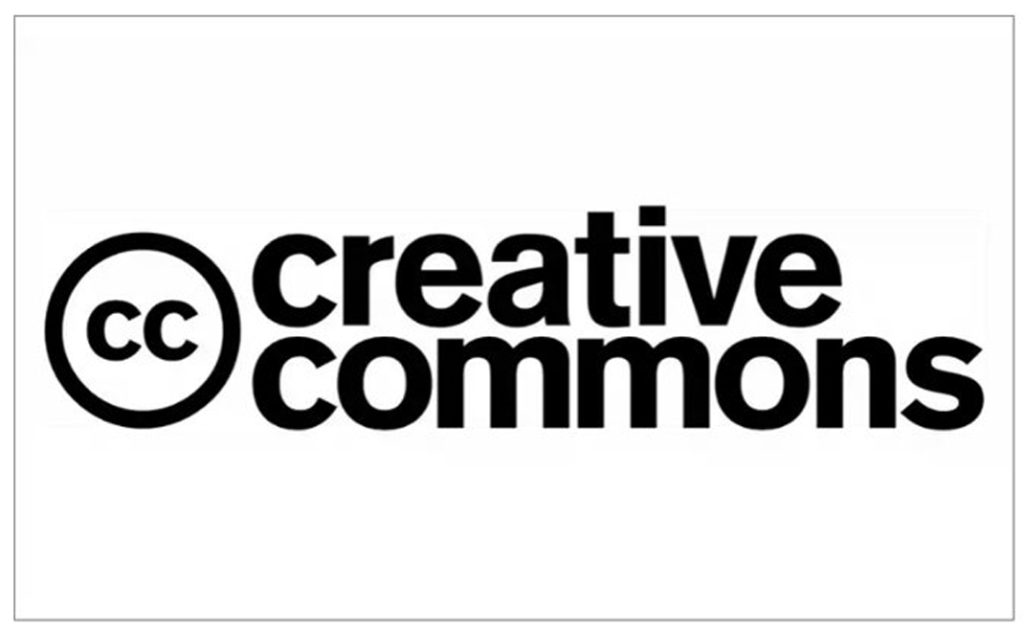
The changes that have taken place, first and foremost the widespread use of digital media and the internet as a way to create, disseminate, and use, have brought about a need to change the classic copyright mechanism according to which ‘all rights are reserved’ from the moment a creation has been created. A more adaptive mechanism of licenses has been established that provides various options for only ‘some rights reserved’. The licenses are adapted to the local laws and language in each of the organization’s member countries. To date the organization has representatives in more than fifty countries worldwide.
The owner of a creation can decide on the level of use and sharing that he permits to others. Each type of license has a dedicated icon, and the creator marks his work with the relevant ones. For example:
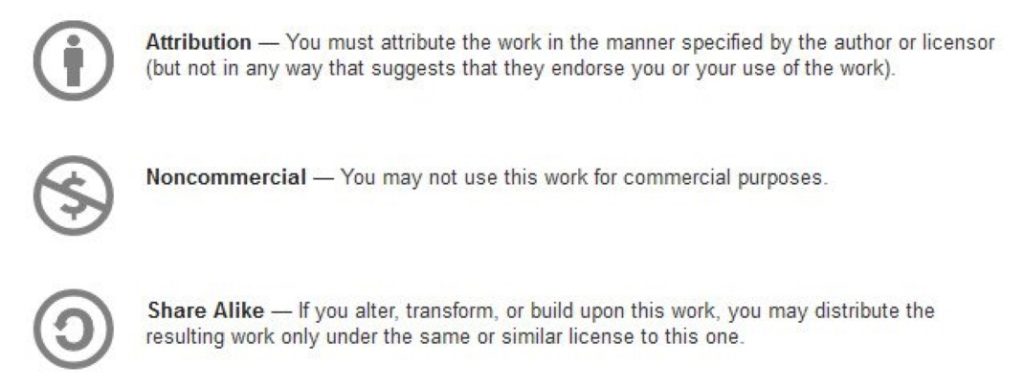
The creator decides which limiting conditions are suitable for his work, and marks it with the limits he has chosen. Example of a license:

The above license specifies that anyone using the work must credit the creator (BY), no commercial use can be made of the work without the creator’s consent (Non-Commercial), works built upon this work can only be distributed under the same or a similar license (Share Alike). Full details and ways to create a license can be found on the Creative Commons website, and on sister websites in the various member countries, including Israel.
Doing Open Design
Open design is not a new invention, on the contrary, from a historical perspective closed design, exclusive design, is the exception, and was born as part of the modern worldview.
In the past, products were generally created in the tradition and framework of local economy. Most people possessed the skills necessary to self-produce most of what they required to meet their needs, and were supported by mutual aid within the community. With the Industrial Revolution, factories took over production, and a division was created between the initiator, the manufacturer, the marketer, and the user. Each of them had his own exclusive interests, defined sphere of activity, each was dependent on the other, but none bore overall responsibility. Today, due to technological development, the possibility for integration has been recreated. Man is once again becoming an involved participant in processes of design, production, and determining modes of use. Gone are the Fordian days of “You can have any color as long as it’s black” (Henry Ford). The manufacturer is no longer the omnicompetent king, but a supplier; the ordinary man knows what he wants and is active in the way to achieving it. Corporations are threatened by this social activism, and are attentive today to every whisper that comes from their audiences, and respond accordingly.The influence of the internet does not leave any issue alive that does not change as a result of the interaction that the web facilitates. We are witnessing temporary associations of strangers around a common issue in an attempt to solve it together. Questions, problems, and solutions shift from one screen to another in the blink of an eye. Creative, political, and ideological forces emerge and dissipate as though of their own accord; they cannot be predicted or controlled, and consequently there is a need to prepare for this kind of reality in a way that is consistent with this dynamic.Products take on forms that are not predetermined, they facilitate changing functions, and their meaning for people in dynamic situations is not absolute and fixed. Attempts to control forms, behaviors, and meanings, and consequently rights, become increasingly difficult if not impossible. Industries fighting against these phenomena, such as the music industry, lose their power; their role of mediating between musician and listener is no longer required, because listener and musician possess the tools to reach one another without mediation.
The ability of different elements to create fruitful dialogues changes the methodologies employed to do things. Design, production, and marketing are effected by means of negotiation on a personal level; the participants in the processes are no longer anonymous stereotypes. Alvin Toffler predicted this process as early as 1980 in his book The Third Wave, and coined the term ‘prosumer’ (producer + consumer) to describe man who is not only a consumer, but a combination of producer and consumer.We are witnessing and participating in a cultural and social change. If until now the ‘do it yourself’ culture typified people’s endeavor in their leisure time, now the availability of online designs and innovative means of production on the local level, such as FabLab, create a different consumer reality. Man no longer purchases an anonymous product, but one in whose design and adaptation to his personal needs he is involved. This is a product to which he has a personal attitude as its creator, and as such it is a sustainable product.
FabLab
One of the tools for realizing locally produced, personally customized design is the fabrication laboratory, FabLab. Today there are a variety of fabrication laboratories all over the world, and one is due to open in Israel. Due to the diverse equipment and instrumentation within it, a fabrication laboratory enables anyone and everyone to themselves produce products which they have designed and adapted for their own use.
Existing designs that are open for the personal use of all can be found on the web. They can be changed and adapted for one’s own personal use. Thus, for example, if you’re looking for a table or shelves for your personal use, plans can be downloaded from the web, their dimensions can be changed and adapted to the specific location where they are needed, their design and finish can be changed, and the treated file can then be sent to the local fabrication laboratory where the product will be manufactured in accordance with your instructions. Every product is ultimately a result of the initial, original design, but differs from it.
Post-Professional Design
As it is depicted in the book, reality is changing, and with it comes the demand for a change in the designer’s objectives and work. The designer should direct his work to a reality of sharing, involvement, and activeness. Designers should relinquish control over the finished product. Today every website designer knows that he is not designing something closed and absolute, but a frame into which changing content will flow; he has relinquished control over the finished product in favor of a dynamic, constantly changing product.“Participatory design has changed the role of the designer: from an author of finished products, like books or furniture, into a developer of frameworks or structures of ‘open works’, like Wikipedia” (Deanna Herst).
The status of the professional industrial designer, who worked rationally until now, as someone who knows what’s best for the user, for all users, is being challenged. The professional universal solution that the industrial designer provided no longer suits everyone, and there is a need to involve the user in order to achieve a range of adapted designs. Reality is not homogeneous, but dynamic and changing, people in different places and at different times have different needs, desires, and wishes. Design has stopped being a creative process dictated from above, and is becoming one of participatory creation. Legitimacy is being accorded to the wisdom of the masses.“The designer of the future has to become a database designer, a meta-designer, not designing objects, but shaping a design space in which unskilled users can access user-friendly environments in which they can design their own objects” (Jos de Mul).
The designer now has to design products that enable people to interpret his work; he is not required to design the finished product. He gains a much broader and meaningful status as someone who outlines possible ways for designing lifestyles. He designs the open frameworks, the potential for experiences, into which and from which people will design their environment.
Open Designs
Ikea products receive different treatments that change their uses and are redesigned. See the Ikea Hackers website. Anyone can, of course, make a product for themselves from the ideas shown on the website.
– A website showing open designs, Instructables, where you can find a restaurant design plan. This is not the plan of a restaurant’s visual design, but a way to participate in establishing, managing, developing, and serving the restaurant’s community. People are invited to establish open restaurants all over the world and share their knowledge with one another.
– Open design in education: Israeli Mushon Zer Aviv talks about his experiences of teaching open code product design in the US.
– As someone who is very active in the sphere of open design, Bezalel Academy of Arts and Design graduate Ronen Kadushin is accorded a place of honor in this review, and a discussion about his work. He can be found online explaining open design, and open designs can be viewed on his website.
– Design company IDEO presents OpenIDEO, a forum to advance solutions.
– DROOG is running an experimental project, Make-Me.com, in which designer Tal Erez is involved.
– There are several Dutch organizations that collaborate on the issue of open design: A forum that discusses open design: (Un)limited Design Forum. A Dutch website that organizes open design competitions: (Un)limited Design Contest.
– A self-replicating 3D printer: RepRap.- Website of a company engaged in methodological tools for participatory creativity: Redesignme.
– And lastly, a commercial website engaged in selling design works: Etsy.
As we can see, open design is grounded in reality and draws its strength from it. Open design is consistent with the social movements that are interwoven into our everyday networks and living environments. Open design meets the need and desire of each and every one of us to belong, to participate, to be creative.
Dr. Victor Frostig Academic Advisor
